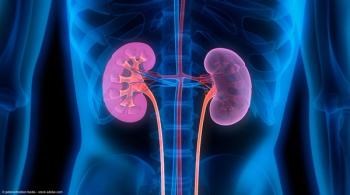
Data support imaging guidelines for high-grade renal injuries
Reconstructive surgery for complications from female-to-male genitourinary reconstruction surgery and complex reoperative hypospadias repair were among noteworthy trauma/reconstruction topics at AUA 2018.
Reconstructive surgery for complications from female-to-male genitourinary reconstruction surgery and complex reoperative hypospadias repair were among noteworthy trauma/reconstruction topics at AUA 2018. The take-homes were presented by Courtney M.P. Hollowell, MD, of Cook County Health and Hospitals System, Chicago.
- Among patients with high-grade renal trauma, re-imaging with CT led to intervention in 9.3% of asymptomatic patients. The finding supports current AUA routine imaging guidelines for high-grade renal injuries.
- Conservative management should be considered first-line for the management of urinary extravasation in renal trauma on initial CT assessment. 83% of patients did not require drainage.
- A review of nearly 52,000 renal trauma cases found that outcomes of both low- and high-grade renal trauma are comparable, the rate of nephrectomy has decreased for high-grade injury, and transfer of care to higher level centers is less likely to impact renal injury management when warranted.
- In a review of 516,341 women who underwent hysterectomy for benign reasons, 7,488 patients had a concomitant genitourinary injury. Minimally invasive surgery had the highest risk of bladder and ureteral injury compared to abdominal hysterectomy and vaginal hysterectomy. Mean per-patient health care costs were increased from $15,808 without injury to $29,884 with injury for a total additional cost of $62.2 million.
- In a group of 78 patients who underwent reconstructive surgery for complications from female-to-male genitourinary reconstruction surgery, urethrocutaneous fistula and meatal stenosis were the most common complications observed. The average number of presenting symptoms per patient was 2.1.
- A single-surgeon series reported on challenging penile prosthesis placement in 72 female-to-male patients undergoing gender affirmation surgery with phalloplasty. The technique included two-cylinder inflatable devices and a Dacron vascular graft with a proximal anchor to the obturator ramus. To minimize infection, all synthetic devices and anchoring material must be explanted and all necessary neophallus revision surgery must be performed before penile prosthesis placement. Outcomes included improved phallus volume and rigidity with a 17% explant rate, of which 12% were secondary to infection.
- Of 436 identifiable posterior urethroplasties, 125 patients underwent the procedure as a result of pelvic fracture urethral injuries. Most cases were completed via a perineal approach, while 5% and 2% required abdominoperineal or robotic approaches, respectively. The overall success rate was 91%, and after the examination of pre- and intraoperative variables, only pelvic angioembolization was associated with increased risk of posterior urethroplasty failure.
- A retrospective review of surgical approaches and long-term outcomes in adults with complex reoperative hypospadias repair reports an initial success rate of 83% after a median follow-up of 9.5 years if a two-stage approach with buccal mucosa is employed.
- Transurethral delivery and fixation of buccal mucosa graft to an internal ventral urethrotomy for the treatment of distal urethral strictures resulted in 87.5% of patients being recurrence free at 1 year, with a mean operative time of 95 minutes.
- Positive Ebstein-Barr virus staining and the loss of androgen receptor expression were associated with lichen sclerosus urethral stricture disease (LS USD) compared to non- LS USD. Separately, androgen receptor density was significantly decreased in specimens from patients with LS USD compared to non-LS USD specimens.
- Separate video abstracts demonstrated robotic bladder neck reconstruction for a post-prostatectomy bladder neck contracture and gender-affirming vaginoplasty.
Newsletter
Stay current with the latest urology news and practice-changing insights — sign up now for the essential updates every urologist needs.


















